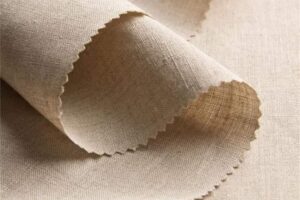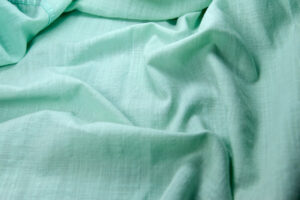When selecting materials for home textiles, the choice of fabric is a critical decision that impacts comfort, durability, and aesthetics. While many options exist, linen fabric has steadily gained recognition as a premier material for everything from bedding to curtains. Its unique combination of strength, softness, and sustainability makes it an intelligent investment for any home.
This growing preference for linen is not just about its appearance. Homeowners and designers are increasingly prioritizing materials that offer long-term value and environmental benefits. Linen, derived from the resilient flax plant, meets these criteria perfectly. It provides a level of performance that few other textiles can match, making it a practical and high-value choice for modern living spaces. Understanding the specific advantages of linen fabric explains why it has become a go-to material for quality home goods.
The Key Benefits of Linen for Home Textiles
The advantages of using linen fabric in your home are extensive. It combines functionality with a distinct aesthetic appeal, making it a valuable addition to any interior design plan. Here are the primary reasons why linen stands out.
Durability and Longevity
One of the most significant attributes of linen fabric is its exceptional durability. The fibers of the flax plant, from which linen is made, are naturally strong and resilient. This inherent strength means that linen textiles can withstand regular use and frequent washing without showing signs of wear and tear.
Unlike other fabrics that can weaken over time, linen actually becomes softer and more comfortable with each wash. This unique characteristic ensures that your linen bedding, tablecloths, and curtains will not only last for years but will also improve in texture and feel. This longevity makes linen a cost-effective choice in the long run, as it reduces the need for frequent replacements. When you invest in high-quality linen fabric, you are purchasing items that can serve your home for a decade or more.

Comfort and Breathability
Linen is highly regarded for its superior comfort, largely due to its natural breathability and moisture-wicking properties. The structure of linen fabric allows air to circulate freely, which helps regulate body temperature. This makes it an ideal choice for bedding and clothing, as it keeps you cool in the summer and warm in the winter.
The fabric can absorb a significant amount of moisture before it feels damp, drawing perspiration away from the skin and allowing it to evaporate quickly. This feature contributes to a more comfortable and hygienic environment, particularly for items like bed sheets and towels. Additionally, linen is naturally hypoallergenic, making it a great option for individuals with sensitive skin or allergies. Its ability to provide year-round comfort is a key reason many people choose to buy fabric online for their home projects.
Eco-Friendly and Sustainable
In an era of increasing environmental awareness, the sustainability of linen fabric is a major selling point. Linen is produced from the flax plant, a hardy crop that requires minimal water and pesticides to grow. Every part of the flax plant can be used, which means there is very little waste generated during the production process.
Furthermore, linen is completely biodegradable. When a linen product reaches the end of its life, it can decompose naturally without releasing harmful substances into the environment. This makes it a much more sustainable option compared to synthetic fabrics, which are derived from petroleum and can persist in landfills for centuries. Choosing linen fabric for your home is a decision that supports a healthier planet and a more sustainable lifestyle. For those looking to make responsible purchases, it is often best to buy fabric online from suppliers who prioritize eco-friendly materials.
Versatility in Design
Linen fabric offers remarkable versatility in terms of aesthetics. It has a natural texture and a subtle luster that can complement a wide range of interior design styles, from rustic and minimalist to modern and refined. Linen can be dyed in a vast array of colors, from soft, muted earth tones to bright, vibrant hues, allowing for endless creative possibilities.
This adaptability makes linen suitable for a variety of home textiles, including:
- Bedding: Linen sheets and duvet covers provide a relaxed yet put-together look.
- Curtains: Linen drapes hang beautifully and filter light softly, creating a warm and inviting atmosphere.
- Tablecloths and Napkins: Linen table settings add a touch of understated style to any meal.
- Upholstery: Its strength makes linen fabric a durable choice for sofas, chairs, and cushions.
The timeless appeal of linen ensures that it will not go out of style, making it a sound investment for your home decor.

Linen vs. Other Fabrics: A Comparative Analysis
To fully appreciate the value of linen, it is helpful to compare it to other common fabrics used in home textiles.
- Linen vs. Cotton: While cotton is soft and widely available, linen is significantly stronger and more durable. Linen also has better moisture-wicking properties and is more resistant to bacteria. Although cotton may be less expensive initially, linen’s longevity often makes it a better long-term investment.
- Linen vs. Polyester: Polyester is a synthetic fabric known for its low cost and wrinkle resistance. However, it lacks the breathability and moisture-wicking capabilities of linen fabric. Polyester is also not biodegradable and its production has a greater environmental impact. Linen offers a more comfortable and sustainable alternative.
- Linen vs. Silk: Silk is a luxurious fabric prized for its smoothness and sheen. However, it is delicate and requires special care. Linen, while also offering a high-end feel, is much more robust and easier to maintain for everyday use in home textiles.
This comparison highlights why linen fabric is often the superior choice for those seeking a balance of durability, comfort, and sustainability.
Caring for Linen Home Textiles
Despite its robust nature, proper care is essential to maintain the quality of your linen items. Following a few simple guidelines will ensure that your linen textiles remain beautiful and functional for years.
- Washing: It is best to wash linen in lukewarm water using a mild detergent. Avoid using bleach or fabric softeners, as these can damage the natural fibers.
- Drying: Linen can be tumble-dried on a low setting, but it is best to remove it while it is still slightly damp to prevent stiffness. Air-drying is also an excellent option and helps preserve the fabric’s integrity.
- Ironing: Linen is known for its natural wrinkles, which are part of its charm. If you prefer a smoother look, iron your linen items while they are still damp.
- Storage: Store linen in a cool, dry place away from direct sunlight to prevent discoloration.
By following these care instructions, you can enjoy the benefits of your linen fabric products for a very long time.

Linen is a Smart Investment for Your Home
Choosing linen fabric for your home textiles is a decision that delivers value on multiple fronts. Its unmatched durability ensures that your investment will last for years, while its exceptional comfort and breathability enhance your daily living experience. The eco-friendly properties of linen allow you to make a responsible choice that benefits the planet.
Whether you are looking to create a serene bedroom retreat with linen sheets or add a touch of style to your dining room with a linen tablecloth, this versatile fabric is an excellent choice. When you are ready to buy fabric online, consider the long-term benefits of linen. Retailers like Fabriclore offer a wide selection of high-quality linen fabric, making it easy to find the perfect material for your needs. Investing in linen is not just about buying a product; it’s about choosing a lifestyle of quality, comfort, and sustainability.
